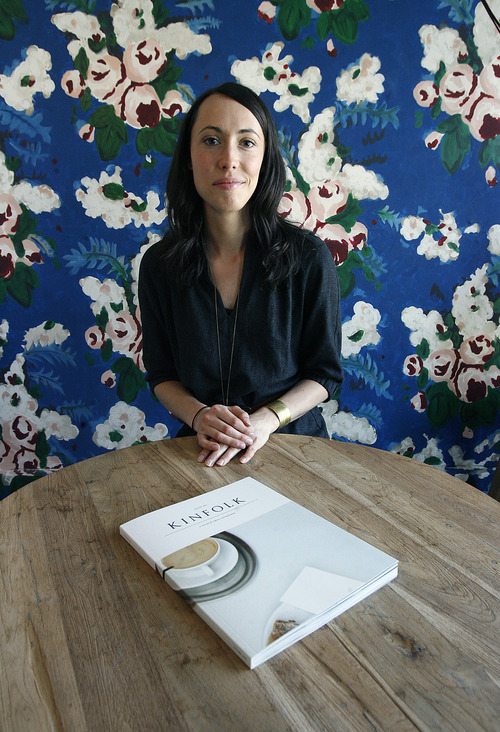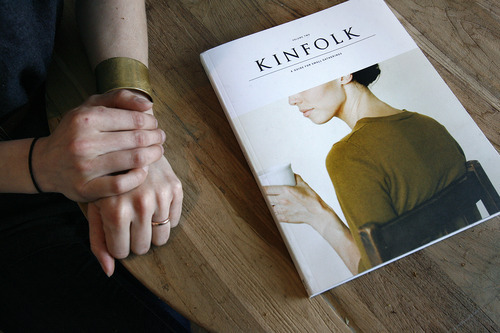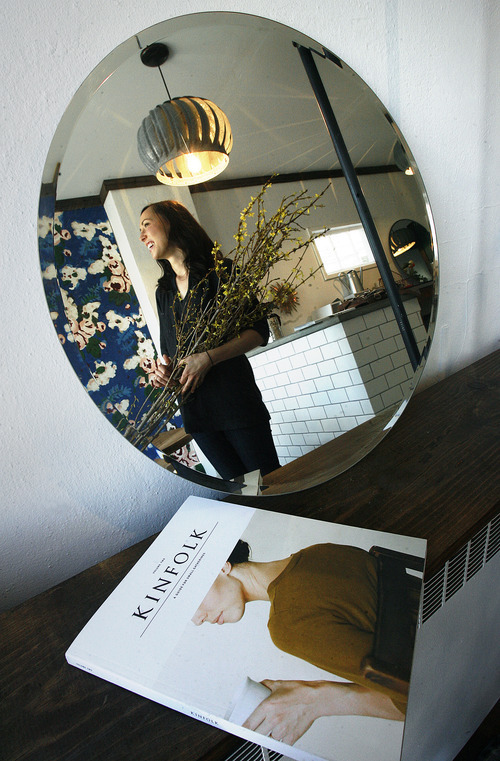This is an archived article that was published on sltrib.com in 2012, and information in the article may be outdated. It is provided only for personal research purposes and may not be reprinted.
In the age of digital information overload, a new breed of slick and visually sumptuous magazines is rising to meet a need for "me time" far from the madding digital crowd.
One of these picture books for adults is Kinfolk: A Guide to Small Gatherings, which began its life last year in Salt Lake City. Its founder and editor Nathan Williams has since moved with the quarterly publication to Portland, but a handful of Kinfolk's contributors live in Utah.
The publication's title hints at its subject matter: entertaining, food, drink and community, all presented through lush photographs, essays and stylish art direction. But unlike similarly visually driven publications such as Martha Stewart Living, Kinfolk sets itself apart by emphasizing a laid-back philosophy to dining and entertaining with little or no how-to information.
For example, a video by Salt Lake City contributors Julie and Matt Walker on making bread in a Dutch oven lovingly follows the kneading and baking, but offers no voice-over instruction or recipe guidance. Imagine the Food Channel with the audio off.
In Volume 2 of Kinfolk, a photo essay captures a perfectly coiffed woman in green plaid picnicking alone near an Oregon stream. This article helpfully advises would-be picnickers to "bring soup and drinks in thermoses, bread, fruit and other snacks."
—
"Not too Martha Stewarty" • Williams says Kinfolk was the idea of a group of like-minded friends.
"There seemed to be a gap in entertaining resources that resonated with us — that offered entertainment ideas that worked for us," he recalls. Martha Stewart Living and other magazines, he says, "cater to a different demographic."
Kinfolk's target demographic is 25- to 30-year-olds, although Williams says readership extends to readers in their 40s.
"We offer options of things to do on weekends, other than going to clubs and bars," he says. "There's a new domestication that is coming back. [People in Kinfolk's demographic] are forced to create family or community in a distant location. We are riding along with that. It's not weird and not too Martha Stewarty."
Williams makes no apologies for Kinfolk's emphasis on aesthetics over "rigid step-by-step." "It was very intentional to exclude recipes to help differentiate us from the other publications," he says. "Our focus is much more on the social element — the people, relationships and traditions."
Kinfolk is also unusual in its emphasis on its hard-copy manifestation. The editors and contributors aren't technophobes by any means. Most are bloggers, and the publication offers an iPad application that links to videos and features through QR barcodes on many of the print articles.
"It seemed natural to us," Williams says, "to use essays and photography to move people away from the computer screen — encouraging people to slow down and take a break with friends away from the digital screen."
—
Romancing the food • Julie and Matt Walker, Salt Lake City-based contributors who make videos as Tiger in a Jar, say they try to romanticize the processes of making food, whether it be Dutch-oven bread or peach preserves.
"You almost commune with the dough as you bake," Julie Walker says of their video. "We wanted to bring that to life."
Matt Walker says the video isn't meant to be instructional, but to "entice viewers to go cook." "There is a younger generation that is looking for something," he says. "People want to slow down and find meaningful activities. You don't have to overdo parties, you just have to get together."
Sarah Winward, who contributed an essay with photos and a video on beekeeping in the most recent edition, says Kinfolk is about an "open-minded, effortless, easy life." "It promotes a lifestyle rather than being a decorating magazine," she says.
As for the meticulously art-directed look, she explains: Kinfolk "is about aesthetics and not about information."
—
Eye candy for "isolated connectivity" • Samir Husni, director of the Magazine Innovation Center at the University of Mississippi and a magazine consultant, calls publications like Kinfolk "eye candy magazines."
"We are seeing a slew of these visually driven kind of publications — they warm your heart and make you feel good," Husni says. "It's fluffy, a marshmallow."
Husni says the omnipresence of digital media is creating a yearning for escape from the unending information tsunami.
"We are bombarded by information, by folks telling us to do this, do that and how to do it," he says. "We want to relax, grab a glass of wine and a magazine like [Kinfolk] and flip through it. It's a me-time magazine. You don't need to think or respond."
Kinfolk, with its distribution through stores that share its aesthetics, such as Williams-Sonoma and Anthropologie, is a genius magazine approach, Husni says.
The idea, at least, of informal face-to-face gatherings appeals to what Husni calls the "isolated-connectivity generation" that's digitally interacting with thousands of people through social media — but in reality is physically isolated in front of an electronic screen. "We are so constantly connected to others, yet we want to be by ourselves when we do it," he says.
By retiring alone to a comfortable chair — or a wooded grove — with a hard copy of Kinfolk and an iPad, the so-called "I-C Gen" can page through the fantasy of face-to-face community, while remaining linked to a digital world.
gwarchol@sltrib.com facebook.com/nowsaltlake —
Connecting with 'Kinfolk'
Kinfolk is available at Anthropologie in Salt Lake City and online at http://www.kinfolkmag.com. An annual subscription is $65.
Some local Kinfolk contributors:
Tiger in a Jar video productions • http://www.tigerinajar.com
Honey of a Thousand Flowers floral design • http://www.sarahwinward.com









